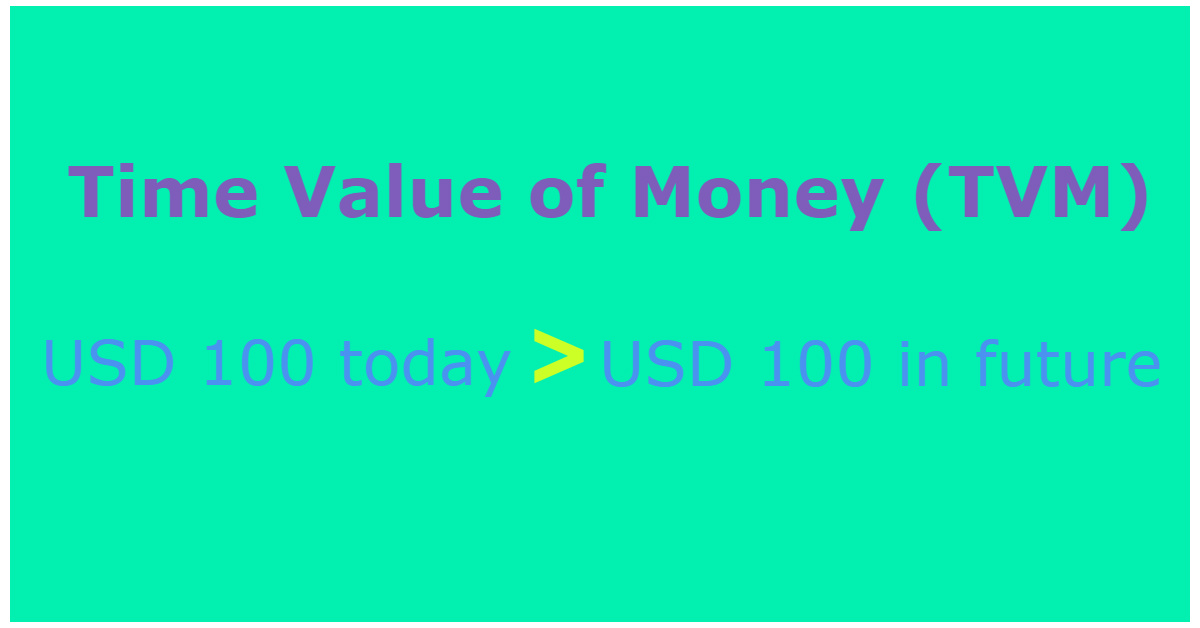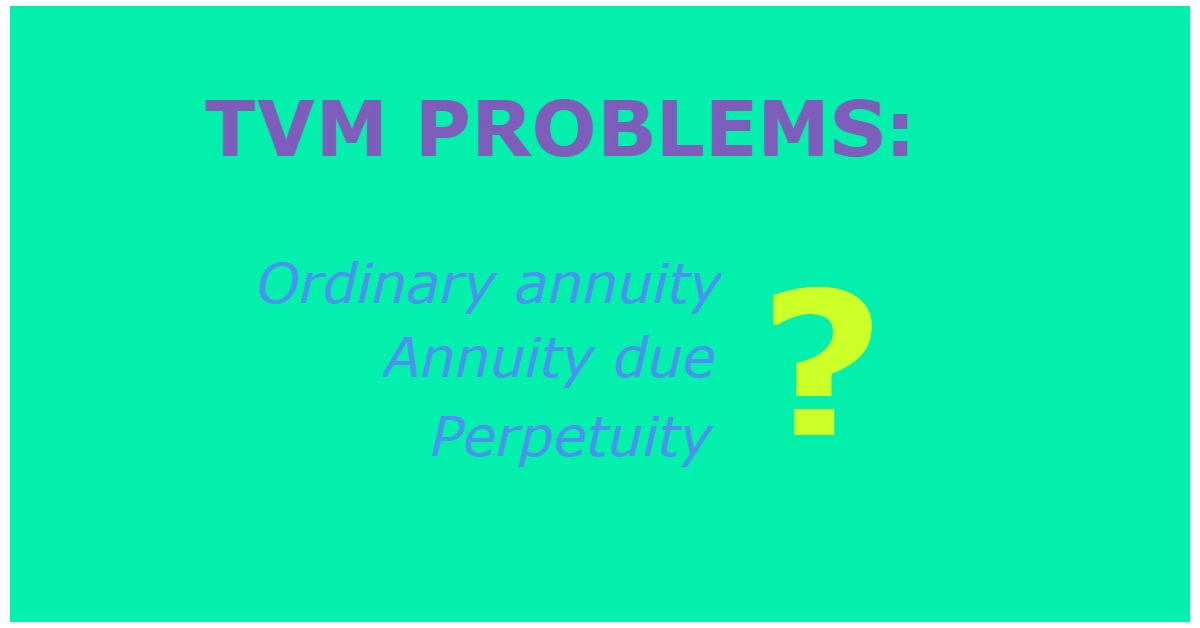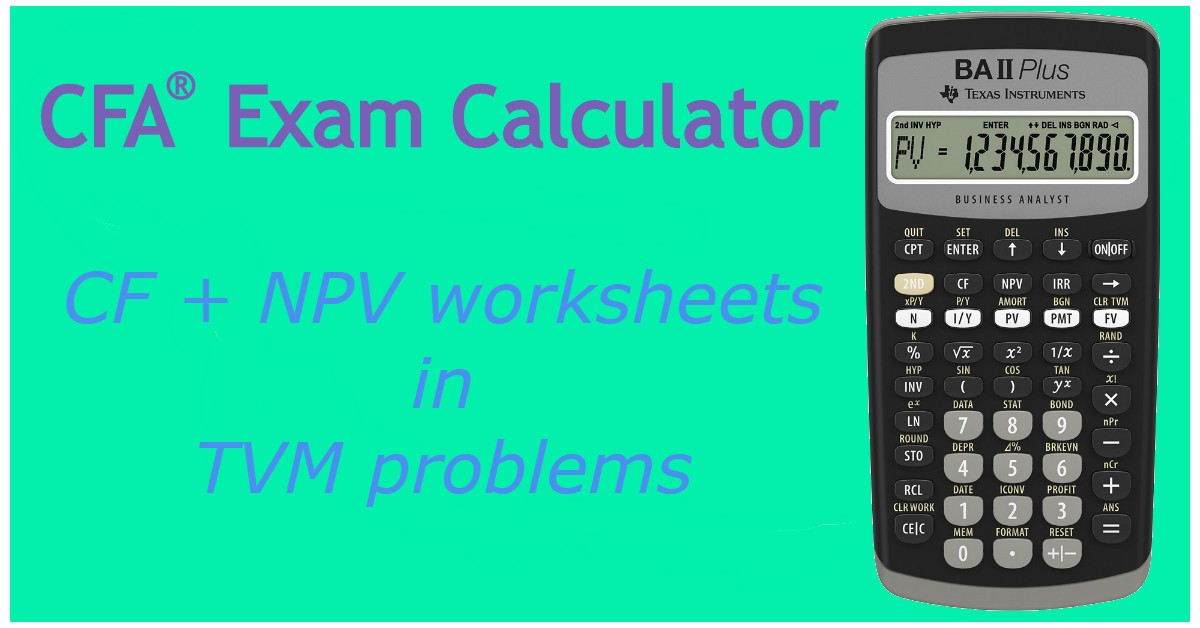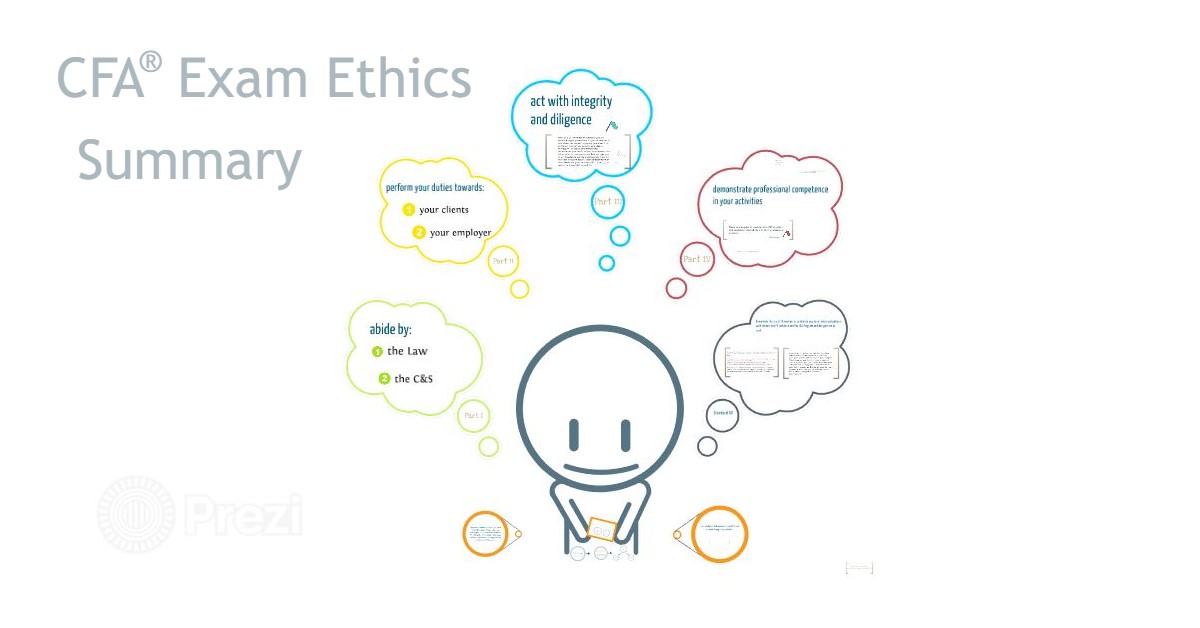Time Value of Money (TVM) CFA® Exam Cheat Sheet

This blog post was created as a part of the CFA exam review series to help you in your level 1 exam revision, whether done regularly or shortly before your CFA exam.
Time Value of Money (TVM) Explained
USD 100 is worth more today than in a year or two.
So USD 100 today > USD 100 in one year's time > USD 100 in two year's time, and so on...
interest rate = price of money
interest rate = real risk-free interest rate + inflation premium + default risk premium + liquidity premium + maturity premium
Interpreting Interest Rates
Interest rates can be perceived as:
- required rates of return what are the expected future profits from an investment?
- discount rates what is the present value of a certain future amount?
- opportunity costs what future profits do we forgo in favor of current consumption?
The PV & FV Formulas
Present Value (PV) & Future Value (FV)
Formula for the future value:
\(FV_N=PV\times(1+r)^N\)
Formula for the present value:
\(PV=\frac{FV_N}{(1+r)^N}\)
Where:
\(FV_N\) – future value,
PV – present value,
r – periodic interest rate,
N – number of periods.
Characteristics of PV and FV
A number of relations characterize the present value and the future value:
- The higher the PV, the higher the FV.
- The higher the FV, the higher the PV.
- The higher the N, the higher the FV.
- The higher the N, the lower the PV.
- The higher the r, the higher the FV.
- The higher the r, the lower the PV.
- The more frequent the compounding, the higher the FV.
- The more frequent the compounding, the lower the PV.
There's more on TVM on our blog!
To continue with the time value of money, read about different types of annuity and see how to apply the CF and NPV worksheets for TVM exam-type problems.
Get More Study & Review Resources
LAST UPDATE: 5 Nov 2023
Read Also:




